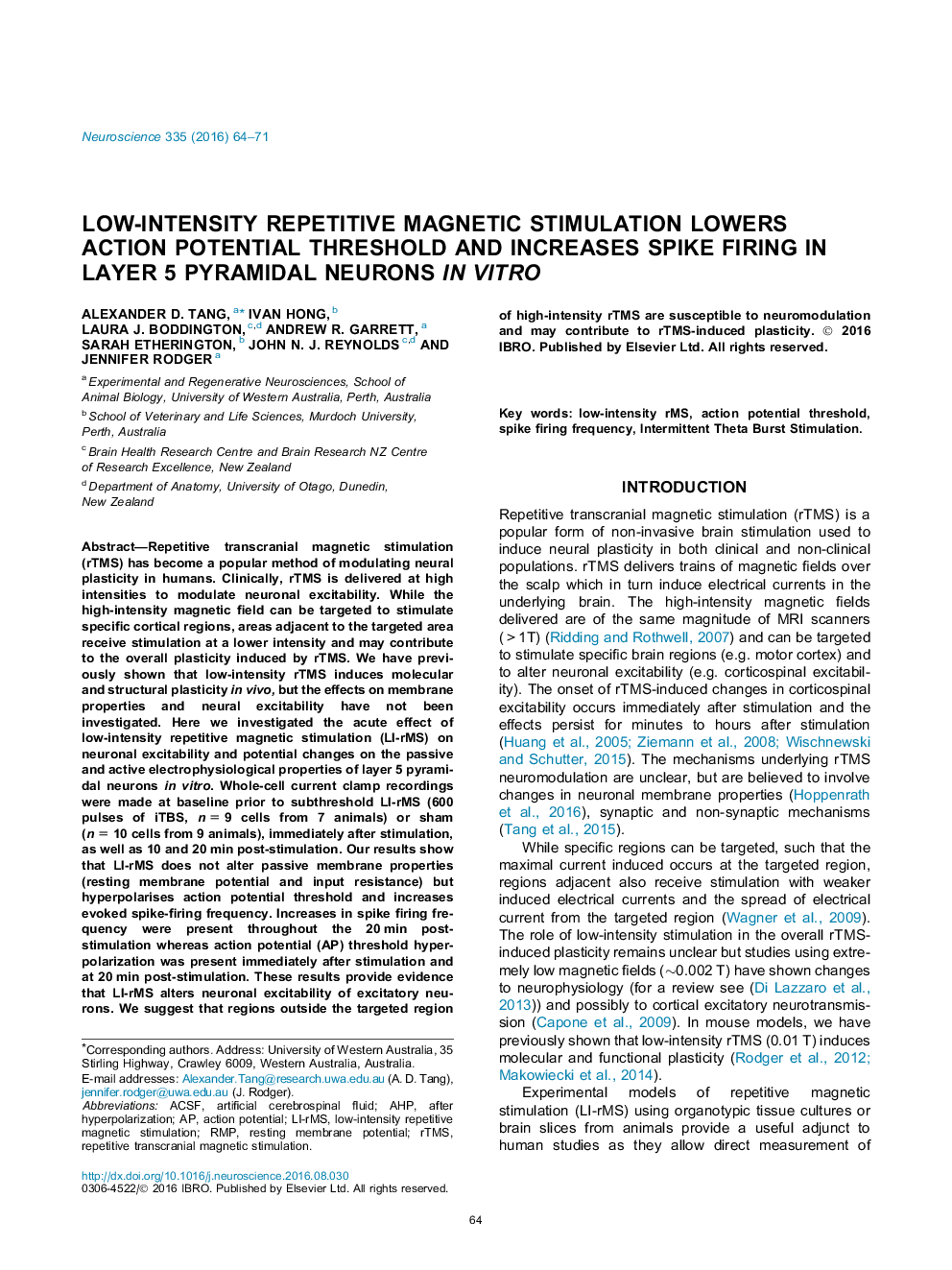| کد مقاله | کد نشریه | سال انتشار | مقاله انگلیسی | نسخه تمام متن |
|---|---|---|---|---|
| 4337265 | 1614741 | 2016 | 8 صفحه PDF | دانلود رایگان |
• The acute effect of LI-rMS on layer 5 pyramidal neurons was investigated in vitro.
• LI-rMS does not alter passive membrane properties.
• LI-rMS induced hyperpolarized action potential thresholds.
• LI-rMS Increased evoked spike firing frequency.
Repetitive transcranial magnetic stimulation (rTMS) has become a popular method of modulating neural plasticity in humans. Clinically, rTMS is delivered at high intensities to modulate neuronal excitability. While the high-intensity magnetic field can be targeted to stimulate specific cortical regions, areas adjacent to the targeted area receive stimulation at a lower intensity and may contribute to the overall plasticity induced by rTMS. We have previously shown that low-intensity rTMS induces molecular and structural plasticity in vivo, but the effects on membrane properties and neural excitability have not been investigated. Here we investigated the acute effect of low-intensity repetitive magnetic stimulation (LI-rMS) on neuronal excitability and potential changes on the passive and active electrophysiological properties of layer 5 pyramidal neurons in vitro. Whole-cell current clamp recordings were made at baseline prior to subthreshold LI-rMS (600 pulses of iTBS, n = 9 cells from 7 animals) or sham (n = 10 cells from 9 animals), immediately after stimulation, as well as 10 and 20 min post-stimulation. Our results show that LI-rMS does not alter passive membrane properties (resting membrane potential and input resistance) but hyperpolarises action potential threshold and increases evoked spike-firing frequency. Increases in spike firing frequency were present throughout the 20 min post-stimulation whereas action potential (AP) threshold hyperpolarization was present immediately after stimulation and at 20 min post-stimulation. These results provide evidence that LI-rMS alters neuronal excitability of excitatory neurons. We suggest that regions outside the targeted region of high-intensity rTMS are susceptible to neuromodulation and may contribute to rTMS-induced plasticity.
Journal: Neuroscience - Volume 335, 29 October 2016, Pages 64–71
